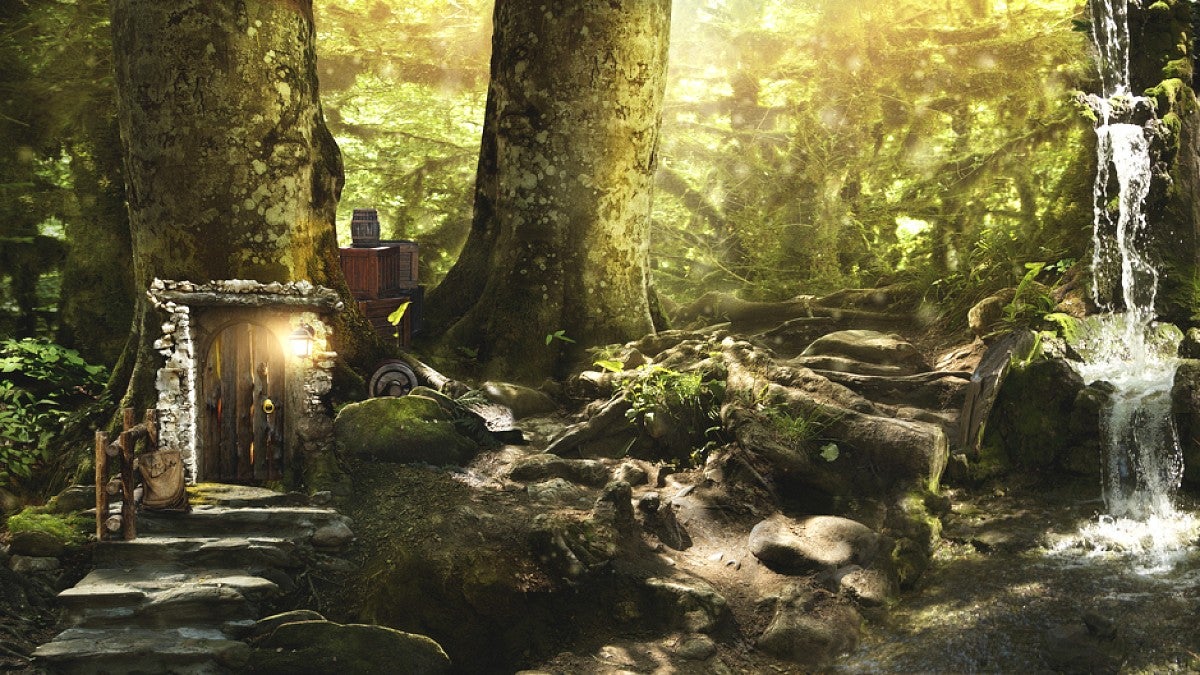The Bronte children — Charlotte, Emily, Ann and Branwell — drew acclaim for the imaginary worlds they shared in books and oral storytelling in the 1800s. Such creativity, which had emerged early in their lives, is far from rare, says University of Oregon psychologist Marjorie Taylor.
In a new study, "Paracosms: The Imaginary Worlds of Middle Childhood," in the journal Child Development, Taylor’s five-member team provides extensive insights on imaginary worlds created by children age 8-12.
Some 17 percent of children in each of two studies described their imaginary worlds in detail. Many of them, the researchers discovered, also shared their creations with their friends, who helped add complexity to the imaginary worlds. In psychology, these imaginary, parallel worlds are called paracosms.
Earlier studies drew from adults who provided memories of the imaginary worlds that they had devised when they were children. The new study got into the minds of children who were actively engaged in such behavior.
The phenomenon is nothing to worry about, said Taylor, a professor emeritus in the Department of Psychology who has been studying children’s imaginary friends and paracosms for some 25 years.
“It’s a positive thing associated with creativity and storytelling, and it’s not particularly rare,” she said. “These are kids who are coming up with very complex stories that they really enjoy and that many will share with others.”
Paracosms became the label for the imaginary parallel worlds of children in a 1976 study. In the 1992 book “The Development of Imagination: The Private Worlds of Childhood,” British authors David Cohen and Stephen MacKeith identified 57 paracosms but considered them to be rare.
Over time, Taylor questioned that assertion as she compiled research evidence in her Imagination Research Lab. Imaginary friends, she said, emerge in young children, while paracosms come later. The new study found a significant relationship between the two, but it also found that the imaginary friends created earlier don’t always end up in imaginary worlds.
In both studies, participating children — drawn from mostly white, educated and middle-to-upper socioeconomic status families — were questioned in a nonleading way about imaginary friends and worlds. If their descriptions reached a defined level, the children were encouraged to provide more details.
In the first study, 37 boys and 40 girls completed five social creativity tasks and assessments of coping strategies and verbal comprehension. Sixteen boys and 20 girls said they had imaginary companions; 44 said they thought about an imaginary place. Fully developed paracosms from six boys and seven girls were identified.
Neither verbal comprehension nor gender were found to be related to children who reported having imaginary friends and paracosms. However, children with paracosms scored higher on creativity measures that involved storytelling.
While the parallel worlds varied in content, they all included details about an environment — forests, lakes, caves, etc. — the inhabitants — bandits, goblins, animals, etc. — and mystical components, such as a fountain that sprayed honey.
The second study sought to replicate the first but also dig deeper. It included two measures of inhibitory control, one of working memory and the other a social creativity component. Paracosms were identified in 16 of 92 children. Imaginary companions were reported by 51 children. Most of those who had developed parallel worlds also reported having had imaginary friends.
Children who had developed paracosms did not differ from other children in verbal comprehension or working memory, but they had more difficulty with inhibitory control, suggesting a link between creativity and lower inhibition. As in the first study, children with paracosms produced more creative endings to their stories.
“We thought paracosms would a private thing,” Taylor said. “Surprisingly, that was not always the case. It can be a very social activity. Often, we found that many kids would be involved together in building the parallel worlds.”
It may be, she speculated, that the most creative children are the ones who are able to shift between focusing their attention and a more open-ended mode of thinking.
“This needs more research to better understand how we generate ideas and come up with new things, unlocking creativity,” Taylor said. “We can be really impressed by the creativity of children left to their own devices. It is important to give them some time free of a schedule because they will come up with things to do that they really enjoy and will share with others.”
Co-authors with Taylor were former UO doctoral students Candice M. Mottweiler, Jacob G. Levernier and Naomi R. Aguiar, who is now at the University of Wisconsin, Whitewater, and former master’s student Emilee R. Naylor, who is now at the University of Utah.
The John Templeton Foundation funded the research by way of a grant to Taylor and Mottweiler. Mottweiler also was supported by a graduate research fellowship from the National Science Foundation.
—By Jim Barlow, University Communications


